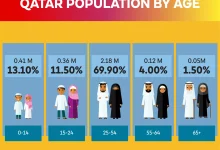As of 2022, the population of Bangladesh is approximately 169 million people. Situated in South Asia, Bangladesh is one of the most densely populated countries in the world, with a population density of over 1,200 individuals per square kilometer. This high density is a result of its relatively small land area combined with a large and growing population.
Geography and Demographics
Bangladesh, bordered by India to the west, north, and east, Myanmar to the southeast, and the Bay of Bengal to the south, occupies a region of 147,570 square kilometers. This compact geographical area, coupled with a significant population, contributes to its high density. The country’s demographic profile reflects a predominantly young population, with a median age of around 27 years. The youthful demographic, along with high birth rates, drives the continuous population growth.
Historical Population Trends
Historically, the population of Bangladesh has seen dramatic changes. Prior to its independence in 1971, the area that is now Bangladesh was part of Pakistan. During the 20th century, especially after World War II, the region experienced rapid population growth due to improvements in healthcare and agriculture, which led to a decline in mortality rates. However, this growth was accompanied by challenges, including resource distribution and infrastructure development.
In the decades following its independence, Bangladesh has made significant progress in controlling population growth through family planning initiatives and improved access to healthcare. Despite these efforts, the population continues to grow, though at a slower rate compared to the past.
Urbanization and Rural-Urban Distribution
The distribution of the population between urban and rural areas has shifted over time. Historically, Bangladesh has been a predominantly rural society, with a significant portion of the population engaged in agriculture. However, urbanization has increased in recent decades. Major cities such as Dhaka, Chittagong, and Khulna have seen substantial population growth due to migration from rural areas in search of better economic opportunities.
Dhaka, the capital and largest city, is a major hub of economic and cultural activity. It is one of the most densely populated cities in the world, facing challenges such as congestion, pollution, and infrastructure strain due to its rapid growth. Other urban centers have also expanded, contributing to a diverse urban-rural dynamic within the country.
Economic Impact of Population Growth
The large population of Bangladesh has both positive and negative impacts on its economy. On one hand, a large labor force can drive economic growth and development. The country’s young population provides a potential demographic dividend, which, if harnessed effectively through education and employment opportunities, can contribute significantly to economic advancement.
On the other hand, rapid population growth poses challenges. It can strain resources, including food, water, and energy supplies. Additionally, it places pressure on infrastructure, healthcare, and educational systems. The government and various organizations continue to address these challenges through policies aimed at sustainable development and resource management.
Social and Cultural Dimensions
Bangladesh’s population is ethnically and culturally diverse. The majority of the population is Bengali, with various ethnic minorities residing in different regions of the country. The cultural fabric of Bangladesh is enriched by a variety of traditions, languages, and practices. Bengali is the official language, and the country’s cultural heritage includes a rich tradition of literature, music, and art.
Population growth has influenced social dynamics, including family structures and community life. Traditional family systems have evolved, with changes in gender roles and increasing educational opportunities for women contributing to shifts in societal norms.
Future Projections
Looking ahead, the population of Bangladesh is projected to continue growing, though at a decelerating rate. Demographic projections indicate that the population may reach approximately 185 million by 2050. This future growth will be influenced by various factors, including fertility rates, mortality rates, and migration patterns.
Efforts to manage population growth and its impacts are critical for ensuring sustainable development. Investments in education, healthcare, and infrastructure are essential to support the growing population and enhance the quality of life for all citizens. Additionally, addressing environmental concerns and promoting economic opportunities will play a key role in shaping the future trajectory of Bangladesh’s population dynamics.
In conclusion, the population of Bangladesh is a defining characteristic of the country, influencing its economic, social, and cultural landscape. With a population of approximately 169 million people as of 2022, Bangladesh faces both opportunities and challenges associated with its high density and ongoing growth. Effective management and strategic planning will be essential in addressing the needs of its people and ensuring a prosperous future for the nation.

